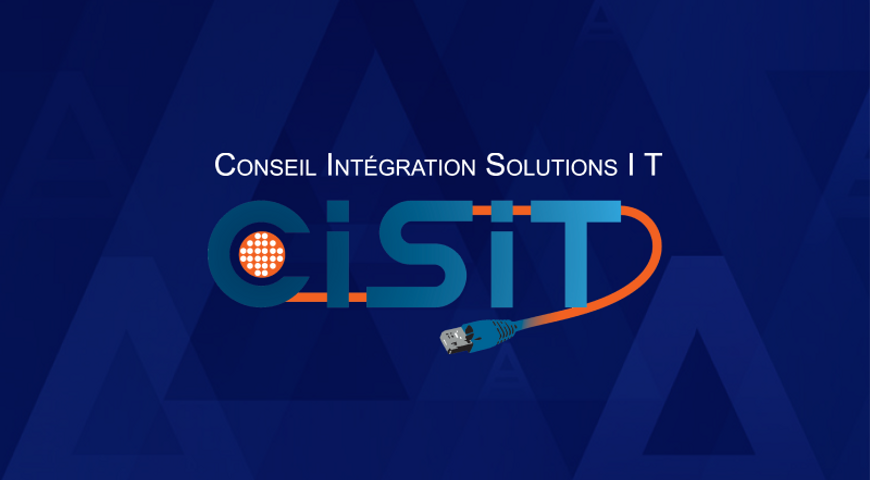
Modern businesses rely on ever-expanding networks and systems to conduct services. As a network (or a system) grows, it houses more and more endpoints to sustain the growing volume of devices and users interacting with the company network.
These endpoints are critical to maintaining day-to-day processes but can pose a security risk for enterprises. If an endpoint carries software vulnerabilities or is somehow compromised by unauthorized parties, this may lead to a security breach, data loss, hindered business processes, and a hit to the company's image and steady revenue stream.
This article will discuss the nature of an exploit and how to implement sensible exploit protection and prevention to safeguard company networks, devices, and users.
What is exploit prevention?
Before discussing exploit prevention, we need to understand what an exploit is and how an attacker takes advantage of it to hurt a company network.
What is an exploit?
An exploit can be a piece of data or software or a sequence of commands that takes advantage of a software vulnerability or a bug in an application, system, or endpoint to cause unanticipated behavior on hardware, computer software, or other electronic devices and, ultimately, breach network defenses.
Essentially, attackers search for design or human-caused flaws in a system to exploit a vulnerability and gain access to the network to carry out unauthorized actions in their interest.
Exploit attacks can occur due to various reasons. Sometimes, users ignore basic security alerts from their operating system or native applications - Microsoft, Apple, Adobe - which exposes them to known cyberattacks.
In other cases, users can update all systems and networks and still fall victim to sophisticated, advanced threats & exploits.
Stages of an exploit attack
Typically, exploit attacks occur in three primary stages. Those are as follows:
- The exploit targets a vulnerability through which attackers can run a shellcode to bypass the Operating System's native protections. (such as Address Space Layout Randomization (ASLR) and Data Execution Prevention (DEP))
- The exploit shellcode runs a set of special instructions called a "payload".
- The payload executes a malicious action. Such actions include downloading an EXE file from the internet to execute it or more advanced tactics, such as opening a reverse shell for the attacker without requiring any EXE files from the exploit threat.
Typical examples of web-based exploits are drive-by download attacks. The attack starts with a user visiting a website compromised by malicious code. After numerous checks, the user is redirected to a landing page containing an exploit. (Silverlight, Java, Flash, or Web Browser exploit).
On the other hand, Adobe or Microsoft Office vulnerabilities can utilize a phishing email or malicious attachments as the initial infection vector.
After "delivery", attackers aim to exploit one or several software vulnerabilities to gain control over process execution and proceed to the exploitation stage. The user's operating system has built-in security protection, so attackers must bypass them to run the arbitrary code.
Successful exploit attacks allow shellcode execution, which runs the arbitrary code, which, in turn, results in a payload execution. As mentioned, payloads can be downloaded as files or directly loaded and executed from the system memory.
Regardless of the initial step performance, attackers aim to launch the payload and enable malicious activity.
Traditional antivirus and anti-malware typically deal with malicious code from the payload when an EXE file is involved in the attack. However, more advanced threats or a payload active past the earlier stages are often challenging for traditional antivirus. This is where exploit prevention comes into play.

The essence of exploit prevention
Exploit prevention (EP) solutions are designed to target specifically malware that preys on software vulnerabilities. EP aims to protect against targeted attacks by safeguarding frequently targeted applications, programs, and technologies.
Robust exploit prevention is an efficient, non-intrusive approach to detecting and blocking known and unknown exploits.
As mentioned, exploits occur in several stages. The goal of exploit prevention is to detect unintended or unanticipated behavior during the final payload stage.
Exploit prevention technology monitors and detects suspicious actions, pauses the execution flow of an application, and applies additional analysis to detect and identify if the attempted action was malicious. Program activity that occurred before the launch of the suspicious code is utilized to determine if the following actions were executed by an exploit.
Moreover, exploit prevention applies numerous security mitigation tactics to address the most common attacking techniques used in exploits. (DII Hijacking, Heap Spray Allocation, Stack Pivot, etc.) The execution tracking mechanism provides additional behavioral indicators to allow the exploit prevention technology to block payload execution and, ultimately, protect users and the target network.
The importance of exploit prevention
Exploit prevention is critical to protect vulnerabilities against a cyber attacker.
It comprises enhanced cybersecurity solutions, employee training, and sensible network management to protect files, devices, and users against exploit attacks.
For example, an unprotected endpoint can easily grant an attacker access to your network, where they can install and execute malware and halt business processes or compromise critical data. Unless your company relies on robust exploit prevention, an attacker can keep exploiting unattended vulnerabilities to significantly damage your day-to-day operations, revenue stream, and customer trust.
Common exploits targeting businesses
Exploits can be divided into five primary categories - hardware, software, network, personnel, or physical-site exploits. Moreover, those can be categorized into known and unknown exploits (zero-day exploits).
Of all categories, personnel (or human-induced) exploits are the most commonly utilized by modern attackers. Let's explore them below.
Phishing
Phishing is a type of social engineering attack. Phishing emails are used to steal information - primarily login credentials and credit card numbers.
Malicious emails are typically disguised as if sent from a trusted entity (email spoofing) and entice the user to open the email and interact with a malicious attachment or link. In doing so, the user can unknowingly download and install malware. The malicious code can then grant attackers access to the user's device and compromise, delete, steal, or hold their data for ransom.
For individual users, phishing can lead to unwanted purchases, identity theft, or severe data loss. For corporations, phishing can be a gateway for more significant attacks. For example, advanced persistent threats (APT) often aim to compromise employees to bypass company security measures to distribute malware in closed systems or gain privileged access to critical business data.
Depending on the scope, phishing can quickly become a full-blown data breach. Here, employee training and exploit prevention solutions are critical to safeguarding the company network.
Malware and Ransomware
Malware (short for "malicious software") is an umbrella term comprising malicious code or programs that aim to harm computer networks.
Malware seeks to penetrate defenses to damage or hinder devices and data, often done by taking control of the target network.
Malware can vary in form and purpose. Some instances of malware are well-known and typically don't pose a challenge to security systems. Others only need a single vulnerability to take over entire networks and wreak havoc. Be it purely for financial gain, sabotage, or political reasons, malware can steal, corrupt, encrypt, or erase data, or hijack core machine functions, causing long-term vulnerabilities if unmitigated.
Ransomware is a specific form of malware designed to infect devices and networks to restrict data access until a ransom is paid. Ransomware is one of the primary targets for exploit prevention as it impacts businesses, public utilities, and healthcare establishments globally.
A ransomware exploit attack costs companies extended expenses. In addition to the ransom payment, businesses can experience additional costs regarding downtime, device and networks, employee salaries, lost business opportunities, and other associated financial losses.
Here, companies must implement top-tier exploit prevention solutions to keep pesky ransomware at bay, ensuring minimal downtime and business continuity.
Zero-Day vulnerabilities (Zero-day exploits)
A zero-day exploit is the most dangerous attack type. Such an exploit targets software vulnerabilities yet unknown by the software vendor or the antivirus solution assigned to protect the target system.
The zero-day exploit only becomes known when your security system detects an attacker exploiting the vulnerability. (hence, the name - "zero-day attacks", as the victims are unaware of the attack before its occurrence)
Zero-day attacks prey on systems running compromised software and aim to strike before the software vendor releases a patch to fix the vulnerability.
Typically, zero-day attacks utilize Web browsers and email attachments to exploit software vulnerabilities in a specific application that engages the attachment or in particular file types - PDF, Word, Flash, Excel, etc. Once the zero-day malware breaches system defenses, it can quickly spread across the entire network.
A zero-day exploit comes in many forms. An attacker can leverage broken algorithms, faulty web app firewalls, poor password security, unprotected open-source components, missing authorizations, and more to perform an SQL injection attack.
If the attack succeeds, it can create new software vulnerabilities on the target network, steal or corrupt sensitive data, hold data at ransom, attempt identity theft, corrupt company operating systems, and more.
Out of all targeted attacks and potential threats, zero-day exploit prevention is critical to protect your company's day-to-day processes and important project files.
Strategies for effective exploit prevention
Exploit prevention takes advantage of powerful tools - endpoint security solutions, intrusion detection and prevention systems, network segmentation, and more. However, your EP strategy also relies on stellar cybersecurity habits and best practices.
Implementing strong password policies
Sometimes, vulnerability exploits are deemed to occur due to human error. Attackers often aim to take advantage of weak passwords and gain control over a network and all files in it. This is why exploit prevention requires companies to enforce the best password creation practices.
- Don't use the same password across web browsers for multiple apps, sites, or services.
- Periodically change passwords to ensure network protection.
- Set a minimum password age of between 3-7 days.
- Disallow users to remain logged in to an account indefinitely; remove "remember me" features to reduce the chance of exploit attacks.
- Set password complexity requirements. Here, it's best to use unique, randomly generated passwords. Passwords shouldn't contain personal details, repetitive or sequential characters, and be at least eight characters long.
- Prohibit login sharing to counter error-induced vulnerabilities.
- Rely on a password generator to create strong, unique passwords.
- Reset admin passwords regularly (for example, every 180 days) to optimally protect the company network.
- Implement an encrypted database to manage passwords. This way, your employees can use long, complex passwords without remembering or writing them down.
- Use multi-factor authentication to add a protection layer between attackers and company assets.
Keeping software and the operating system updated
Patch management is a fundamental element of sensible exploit prevention. It ensures that software, applications, operating systems, and network protection tools are updated as soon as possible to fix existing vulnerabilities.
- Create comprehensive patch management policies to establish routines, timeframes, and procedures for an optimal patching process.
- Make a complete inventory of all software and hardware within the company premises to understand which patches are critical to system protection and ease exploit prevention.
- Categorize company assets to prioritize potential vulnerabilities and apply patches to fix them in the corresponding order.
- Automate patching to stay on top of all vulnerability patches. Having a dedicated patching solution apply patches according to your categorization ensures no attacker can exploit a known vulnerability on your network.
- Test patches to ensure their integrity. A compromised patch can cause further vulnerability exploits.
- Apply patches as soon as possible. Be it manually (if you run an SMB and operate fewer systems) or automatically, immediate patching is crucial to blocking vulnerability exploits.
- Monitor vendor patch announcements and document new patch applications to ease exploit prevention.
Conducting regular security audits to target software vulnerabilities
Cybersecurity audits are a cornerstone for efficient exploit prevention. They create a comprehensive analysis and review of a company's IT infrastructure to detect vulnerabilities, cyber threats, and exposed links and suggest exploit protection practices to counter pesky attacks.
The primary benefits of a cybersecurity audit are:
- Vulnerability identification and risk assessment
- Regulatory compliance
- Enhanced asset protection and security measures
- Critical data protection and customer trust
- Proactive threat detection and exploit protection
- Sensible Incident Response (IR) tactics
Training employees on security best practices
Blocking threats and mitigating software vulnerabilities are crucial to efficient exploit prevention. However, your employees can often accidentally enable an exploit attack. Ensuring proper employee training and accountability is critical to minimize exposed vulnerabilities and protect users and systems.
- Enforce strong protocols and make sure your employees follow them.
- Implement sensitive data protection policies.
- Teach your employees about various cyber threats, vulnerability exploits, and accountability.
- Create backups of all important data.
- Only allow authorized access to devices and networks.
- Prohibit all unauthorized software.
- Train your employees on proper email management.
Leveraging advanced security solutions to mitigate software vulnerabilities
Exploit prevention strives to address various cyber threats to protect your company network. From a Microsoft Office software vulnerability to removable media protection to advanced threats, exploit prevention can take advantage of numerous threat prevention tools to deliver the most efficient service.
Intrusion Detection and Prevention Systems
An Intrusion Detection System (IDS) and an Intrusion Prevention System (IPS) monitor network traffic and analyze it for signs of potential intrusions - exploit attacks or incidents - that may pose a significant threat to the company network. Afterward, intrusion prevention aims to stop the detected intrusions, typically by terminating sessions or dropping packets.
IDS and IPS are included within next-gen firewalls (NGFW) as robust protection functionality.
Endpoint Protection Solutions
Endpoint security solutions monitor and protect endpoints against cyber threats and exploit attacks. EDR and EPP protect computers, laptops, smartphones, tablets, and other devices to deny attackers access to potential exploits.
Network Segmentation
Network segmentation is an exploit-prevention technique that divides your network into smaller sub-networks to enable different teams to compartmentalize the smaller networks and implement unique prevention and protection controls and services to each sub-network.
Network segmentation is done by partitioning a physical network into numerous logical sub-networks. Once complete, security controls are applied to all segments to protect them against exploit attacks.
The Future of Exploit Prevention
Exploit prevention is an ever-evolving discipline due to the rapid technological progress in the modern cybersecurity landscape. Popular browsers (examples: Chrome, Edge, Firefox), applications such as Word, Adobe Reader, Excel, etc., and plugins (Flash Player) will continue to be examined and tested by security specialists because they're widely used by companies and enterprises globally.
Moreover, mobile operating systems - Android, iOS, Windows Phone - and critical IoT devices will also be a research target by security providers and analysts. Research tools and techniques must be adapted to work on different architectures - ARM, MIPS, x86, x64, and operating systems - Windows, iOS, Linux, Android, etc.
Exploit prevention will continue to evolve to adapt proven techniques for specific architectures to different environments and operating systems.
Essentially, exploit prevention of the future will have to utilize a mix of reverse engineering, code review, and smart fuzzing to leverage knowledge and expertise in detecting a software vulnerability to reduce the risk of exploit attacks.
Conclusion
Exploit prevention is crucial for organizations of all sizes. Companies must protect files, devices, and systems against targeted attacks by detecting and mitigating exploits across the entire company network.
A robust exploit prevention strategy must cover devices, systems, and employees to ensure the latter are well-trained so as not to invite exploit attacks and prepared to react accordingly if attacks do occur.
Combining comprehensive training, cybersecurity solutions, and reliable backup tools is key to protecting companies against a sophisticated attack, keeping critical processes up and running, and ensuring business continuity and a steady revenue stream.
About Acronis
A Swiss company founded in Singapore in 2003, Acronis has 15 offices worldwide and employees in 50+ countries. Acronis Cyber Protect Cloud is available in 26 languages in 150 countries and is used by over 21,000 service providers to protect over 750,000 businesses.



